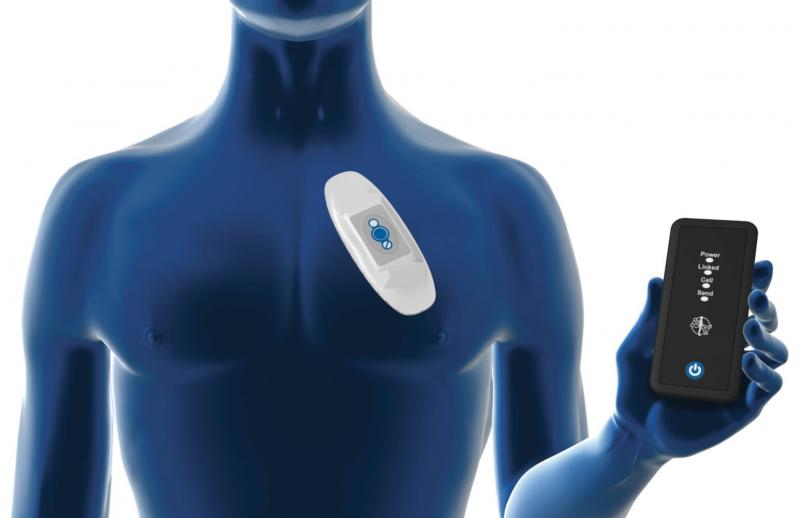Ambulatory Blood Pressure Monitoring (ABPM) patient monitors are specialized devices used to measure blood pressure at regular intervals over a 24-hour period while the patient goes about their normal activities. ABPM is particularly useful for diagnosing conditions like white-coat hypertension, masked hypertension, and nocturnal hypertension, providing a more accurate representation of a patient’s blood pressure than single measurements taken in a clinical setting.
Market Size and Growth
- Market Value: The global ABPM patient monitors market was valued at around USD 150-200 million in 2023.
- Growth Rate: The market is expected to grow at a CAGR of 6-8% from 2024 to 2030, driven by increasing awareness of cardiovascular diseases, technological advancements, and the growing need for continuous, accurate blood pressure monitoring.
Key Factors Driving the Market
- Increasing Prevalence of Hypertension:
- The rise in hypertension globally, largely due to aging populations, unhealthy diets, sedentary lifestyles, and increased stress levels, is a major driver of the ABPM market. Early detection of hypertension helps in preventing cardiovascular diseases such as stroke and heart attack.
- Pros: ABPM offers more accurate and comprehensive data compared to single blood pressure measurements.
- Cons: High initial cost of ABPM devices may limit widespread adoption in some regions.
- Rising Demand for Home-Based and Outpatient Monitoring:
- Increasing demand for remote patient monitoring systems, particularly for chronic conditions like hypertension, is fueling the adoption of ABPM. Patients and healthcare providers prefer home-based monitoring to reduce the frequency of clinic visits.
- Pros: Enhances patient compliance and reduces the need for frequent hospital visits.
- Cons: May require patient education on device usage.
- Technological Advancements:
- Continuous improvements in ABPM technology, including wireless connectivity, data analytics, cloud integration, and user-friendly interfaces, are making these devices more accessible and efficient.
- Pros: Advances in technology enable seamless data transfer and better integration with electronic health records (EHRs).
- Cons: Data privacy and security concerns due to the use of wireless and cloud-based platforms.
- Growing Emphasis on Early Detection of Cardiovascular Conditions:
- Healthcare systems worldwide are focusing on early diagnosis and management of cardiovascular conditions to reduce long-term healthcare costs. ABPM plays a critical role in identifying hypertension-related risks early on, especially in high-risk populations.
- Pros: Early diagnosis can prevent serious cardiovascular events.
- Cons: The availability of ABPM devices is limited in certain low-income areas.
Market Segmentation
By Product Type
- Arm-Based ABPM Monitors:
- These are the most common ABPM devices, used for tracking blood pressure from the upper arm.
- Pros: Highly accurate and widely used.
- Cons: Some patients may find them bulky or uncomfortable for 24-hour use.
- Wrist-Based ABPM Monitors:
- Wrist-based devices are more compact and offer increased patient comfort.
- Pros: More comfortable for long-term wear.
- Cons: May be less accurate than arm-based monitors in certain cases.
By End-User
- Hospitals and Clinics:
- ABPM monitors are primarily used in healthcare settings for diagnosing hypertension and monitoring patients before and after treatment.
- Pros: Professional monitoring and quick access to results.
- Cons: Requires patient to visit a healthcare provider for setup.
- Home Healthcare:
- Home-based ABPM monitoring is becoming increasingly popular, particularly for chronic disease management.
- Pros: Convenient for patients and reduces hospital visits.
- Cons: Requires proper patient education and training for effective use.
- Ambulatory Surgical Centers (ASCs):
- ABPM is sometimes used in ASCs to monitor patients during outpatient procedures, especially for individuals at risk for cardiovascular complications.
- Pros: Helps in managing perioperative blood pressure.
- Cons: Limited usage compared to other settings.
Market Challenges
- High Cost of Devices:
- ABPM monitors, particularly advanced models, can be expensive, limiting their adoption in low- and middle-income countries.
- Cons: High cost may reduce market penetration in developing regions.
- Limited Awareness:
- Despite the benefits of ABPM, awareness about the technology is still relatively low in many regions, hindering market growth.
- Cons: Lack of awareness limits adoption among both healthcare providers and patients.
- Patient Compliance:
- Wearing an ABPM device for 24 hours can be uncomfortable for some patients, which may result in non-compliance or inaccurate data collection.
- Cons: Low patient compliance can affect diagnostic accuracy.
Market Trends
- Integration with Digital Health Platforms:
- The integration of ABPM devices with digital health platforms and cloud-based systems is a growing trend. This allows for real-time monitoring, remote data access by healthcare providers, and better management of chronic diseases.
- Pros: Facilitates more effective remote patient care.
- Wearable ABPM Devices:
- The development of lightweight, more comfortable wearable ABPM devices is gaining traction. These devices are designed to improve patient compliance and provide continuous monitoring without being intrusive.
- Pros: Enhances user comfort and increases data accuracy.
- Growing Adoption in Emerging Markets:
- Countries in Asia, Latin America, and the Middle East are witnessing an increasing demand for ABPM devices due to rising healthcare awareness and improving medical infrastructure.
- Pros: Expanding market opportunities in developing regions.
- Focus on Preventive Healthcare:
- Increasing focus on preventive healthcare and the rising trend of home-based care are pushing the demand for ABPM as a non-invasive, accurate diagnostic tool.
- Pros: Supports early intervention and preventive treatment.
Future Outlook
The ABPM Patient Monitors Market is expected to see continued growth due to the rising prevalence of hypertension, increased emphasis on preventive care, and technological advancements in monitoring devices. While challenges such as high costs and limited awareness may affect short-term adoption, the long-term outlook remains positive, particularly as healthcare systems shift toward remote monitoring and early diagnosis of cardiovascular conditions. Expansion into emerging markets and continued innovation in device comfort and usability are likely to drive future market growth.
Click Here, To Get Free Sample Report https://stringentdatalytics.com/sample-request/abpm-patient-monitors-market/15629/
Market Segmentations:
Global ABPM Patient Monitors Market: By Company
GE Healthcare
American Diagnostic
Lumiscope (GF Health)
Mindray International
Philips
Hill-Rom
Medtronic
Dragerwerk
Spacelabs Healthcare
Schiller
Global ABPM Patient Monitors Market: By Type
General
Wearable
Global ABPM Patient Monitors Market: By Application
Hospital
Clinic
Others
Global ABPM Patient Monitors Market: Regional Analysis
The regional analysis of the global ABPM Patient Monitors market provides insights into the market’s performance across different regions of the world. The analysis is based on recent and future trends and includes market forecast for the prediction period. The countries covered in the regional analysis of the ABPM Patient Monitors market report are as follows:
North America: The North America region includes the U.S., Canada, and Mexico. The U.S. is the largest market for Cold-chain Pharma in this region, followed by Canada and Mexico. The market growth in this region is primarily driven by the presence of key market players and the increasing demand for the product.
Europe: The Europe region includes Germany, France, U.K., Russia, Italy, Spain, Turkey, Netherlands, Switzerland, Belgium, and Rest of Europe. Germany is the largest market for Cold-chain Pharma in this region, followed by the U.K. and France. The market growth in this region is driven by the increasing demand for the product in the automotive and aerospace sectors.
Asia-Pacific: The Asia-Pacific region includes Singapore, Malaysia, Australia, Thailand, Indonesia, Philippines, China, Japan, India, South Korea, and Rest of Asia-Pacific. China is the largest market for Cold-chain Pharma in this region, followed by Japan and India. The market growth in this region is driven by the increasing adoption of the product in various end-use industries, such as automotive, aerospace, and construction.
Middle East and Africa: The Middle East and Africa region includes Saudi Arabia, U.A.E, South Africa, Egypt, Israel, and Rest of Middle East and Africa. The market growth in this region is driven by the increasing demand for the product in the aerospace and defense sectors.
South America: The South America region includes Argentina, Brazil, and Rest of South America. Brazil is the largest market for Cold-chain Pharma in this region, followed by Argentina. The market growth in this region is primarily driven by the increasing demand for the product in the automotive sector.
Click Here, To Buy Premium Report https://stringentdatalytics.com/purchase/abpm-patient-monitors-market/15629/?license=single
Key Points:
- Define, describe and forecast The Global Market by type, application, end user and region.
- Provide enterprise external environment analysis and PEST analysis.
- Provide strategies for company to deal with the impact of COVID-19.
- Provide market dynamic analysis, including market driving factors, market development constraints.
- Provide market entry strategy analysis for new players or players who are ready to enter the market, including market segment definition, client analysis, distribution model, product messaging and positioning, and price strategy analysis.
- Keep up with international market trends and provide analysis of the impact of the COVID-19 epidemic on major regions of the world.
- Analyze the market opportunities of stakeholders and provide market leaders with details of the competitive landscape.
About Stringent Datalytics
Stringent Datalytics offers both custom and syndicated market research reports. Custom market research reports are tailored to a specific client’s needs and requirements. These reports provide unique insights into a particular industry or market segment and can help businesses make informed decisions about their strategies and operations.
Syndicated market research reports, on the other hand, are pre-existing reports that are available for purchase by multiple clients. These reports are often produced on a regular basis, such as annually or quarterly, and cover a broad range of industries and market segments. Syndicated reports provide clients with insights into industry trends, market sizes, and competitive landscapes. By offering both custom and syndicated reports, Stringent Datalytics can provide clients with a range of market research solutions that can be customized to their specific needs.
Contact Us
Stringent Datalytics
Contact No- +1 346 666 6655
Email Id- sales@stringentdatalytics.com




Leave a Reply